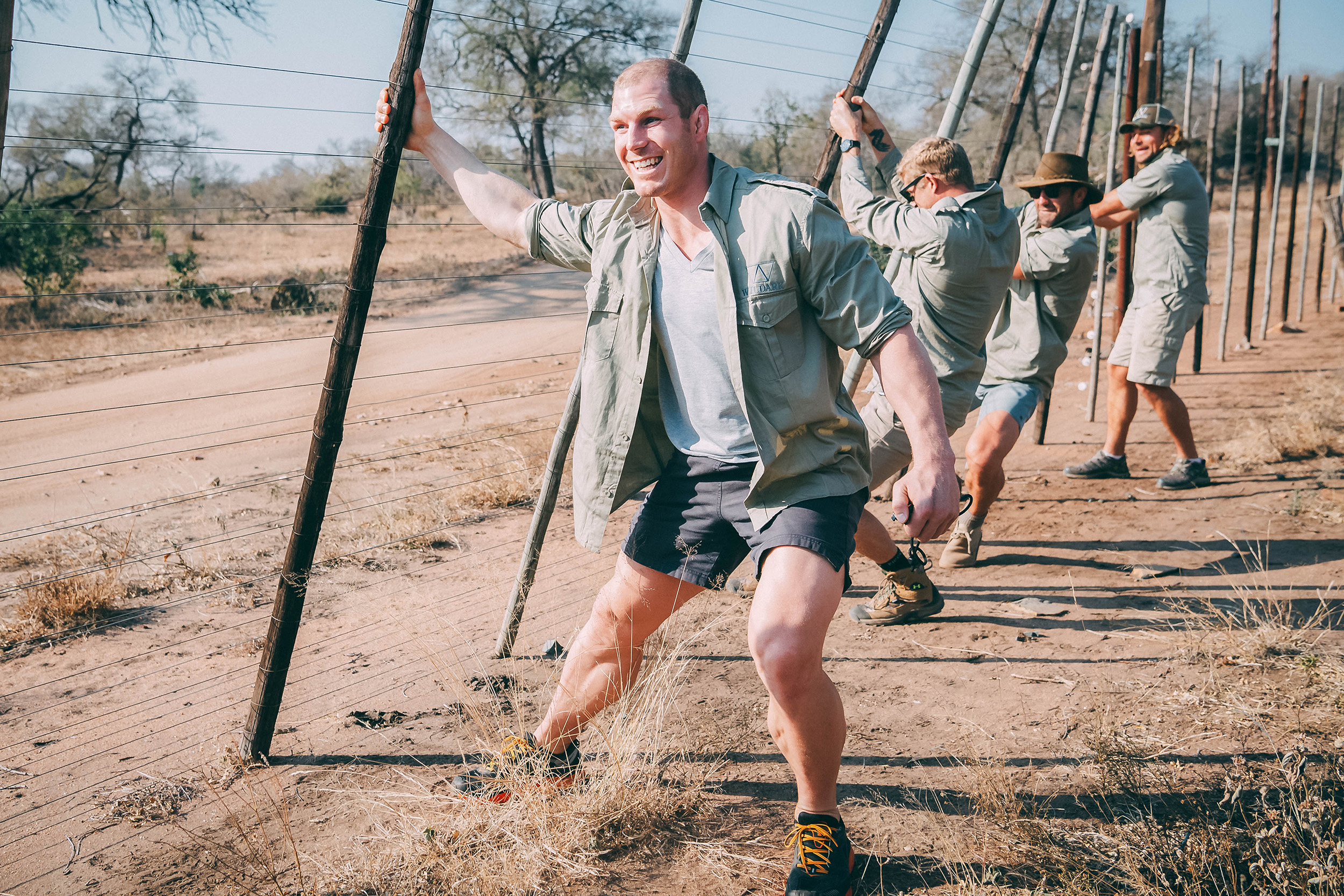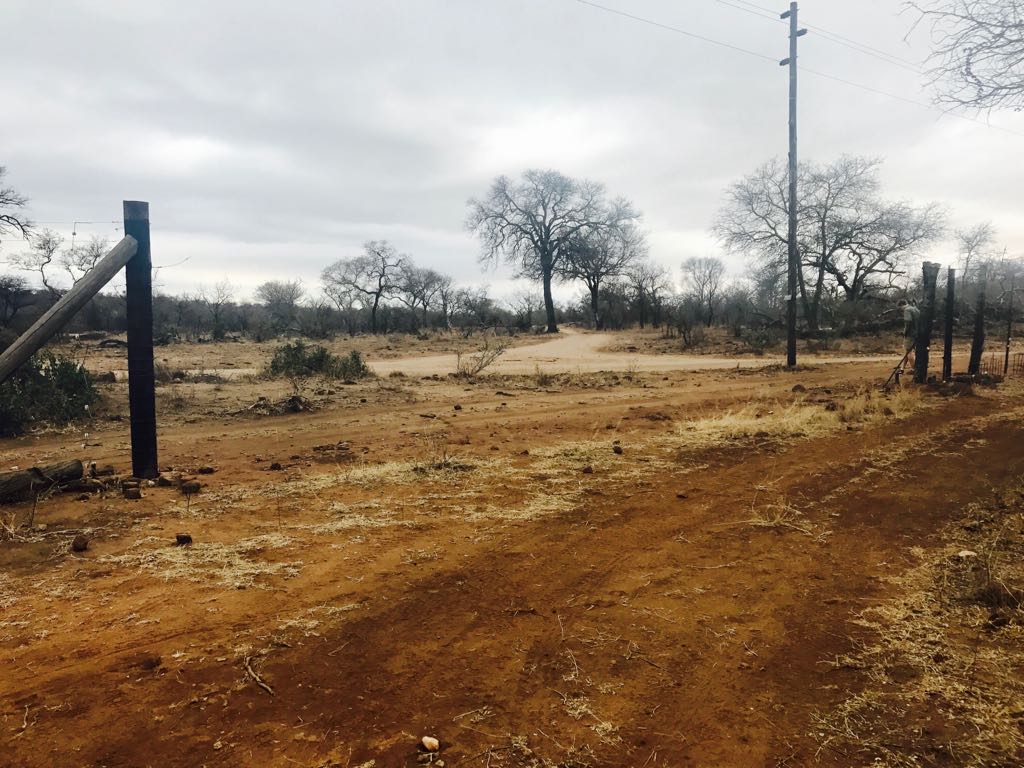WildArk founders Mark and Sophie Hutchinson walk along the boundary of Pridelands Conservancy and the Greater Kruger Region. Their dream to one day drop fences and extend the wildlife corridor. Photo: Kirstin Scholtz
In February 2017, when we at WildArk, together with our partners John and Anton Lategan, announced the securing of our first conservancy, Pridelands, in South Africa, we were very clear on what the immediate priorities were.
The task at hand was significant, but the benefits were immense. The 2000 hectare property had been used as a buffalo hunting farm and left in disrepair.
“We’ve got a lot of work to do. The reality is that this property has been fenced off from the Greater Kruger region for 50 years, limiting the natural flow of wildlife, which has adversely affected the bush,” said Mark Hutchinson, Founder of WildArk in February 2017. “Some areas need rehabilitation, especially erosion gullies; there are too many roads, buildings, and the fences need to come down. There is, unfortunately, rubbish everywhere. We want to get this place to a standard that makes it acceptable to drop our fences and open up into Greater Kruger.”

WildArk ambassadors Mick Fanning and David Pocock at the wilderness that is the Greater Kruger National Park, separated from Pridelands by the last fence in July 2017. Photos Kirstin Scholtz

WildArk ambassadors David Pocock and Mick Fanning keen to pull down the fence on Pridelands during their visit in July 2017. Photos Kirstin Scholtz
Traditionally, fences in South Africa were erected to either keep wildlife in or people out; or both. Fences, however, impact on the natural balance within an ecosystem. For example, elephants clear trees that allow other species to benefit from open grasslands and they create vegetation gaps where new plants can grow; they dig for water during drought periods that benefit other species and are responsible for seed dispersal from the plants they eat. Fencing elephants out of an area can create unnatural ecosystems.
The benefits of opening wildlife corridors ensure the natural flow and balance between wildlife and vegetation.
The location of Pridelands, near Hoedspruit in South Africa, means that the property falls within the Greater Kruger National Park (GKNP). The GKNP refers to the over twenty private reserves to the west of the Kruger National Park (KNP) which add to the total Kruger reserve. In total, the whole area covers 2,000,000 hectares of unfenced, wild reserve with free movement of wildlife across this spectacular land.
Over the past decade, there has been a strong conservation push to reduce the number of fences and open the natural wildlife corridors within this biodiversity hotspot, home to some of the world’s most iconic species.

WildArk co-Founder Sophie Hutchinson and daughter Ayla work on cutting the first piece of the fence on this historic day in September 2017. Photos: Kirstin Scholtz

Pridelands manager John Lategan shakes hands with neighbours from Jejane in preparation to drop the fence that separates Pridelands from Greater Kruger in September 2017. Photos Kirstin Scholtz
So after seven months of blood, sweat and tears on Pridelands, with the support of the local community, and favourable discussions with our neighbours, we are delighted to announce that we have begun the process of bringing down the northern fence between Pridelands and our neighbour Jejane, in order to become a member of Balule Game Reserve. This means we have now opened Pridelands to the Greater Kruger region adding 2000 hectares to conservation and reestablishing a significant wildlife corridor that will aid in the creation of a flourishing ecosystem.
“Being able to share this natural wilderness with the wildlife that surrounds this area is a dream come true,” said Sophie Hutchinson, Co-Founder of WildArk. “We watch and wait with bated breath to see which species will be the first to cross into the relatively untouched vegetation of Pridelands.”
Local resident John Lategan, a shareholder in Pridelands, who has been working on the farm all year, was thrilled that the fences had commenced being dropped, he said;
“We set out on a mission this year to open up into Kruger and see elephant and lion roam here again for the first time in over half a century. It was a great event seeing both sides of the fence turn up for what was a celebration of a common goal of many residents of Hoedspruit, to see an ever expanding natural ecosystem thrive right on our doorstep.”


The fence is open for the first time in 50 years and both sides share in the celebrations!

A traditional “fence” party was held on the 15th of September, where about 60 Pridelands and Jejane folk gathered to celebrate another 2,000ha of bush being opened into Kruger and with it the extension of habitat for animals.
As kilometres of fencing is removed, we will turn our focus to creating wildlife communities and eco-tourism experiences that will connect those people who may not have experienced the majestic species and wilderness of their native South Africa, while at the same time digitally connecting people around the world with this important biodiversity hotspot.
The Pridelands shareholders want to thank our northern neighbour Jejane and the Balule Nature Reserve for allowing us to join in the expansion of wildlife areas in Greater Kruger.
